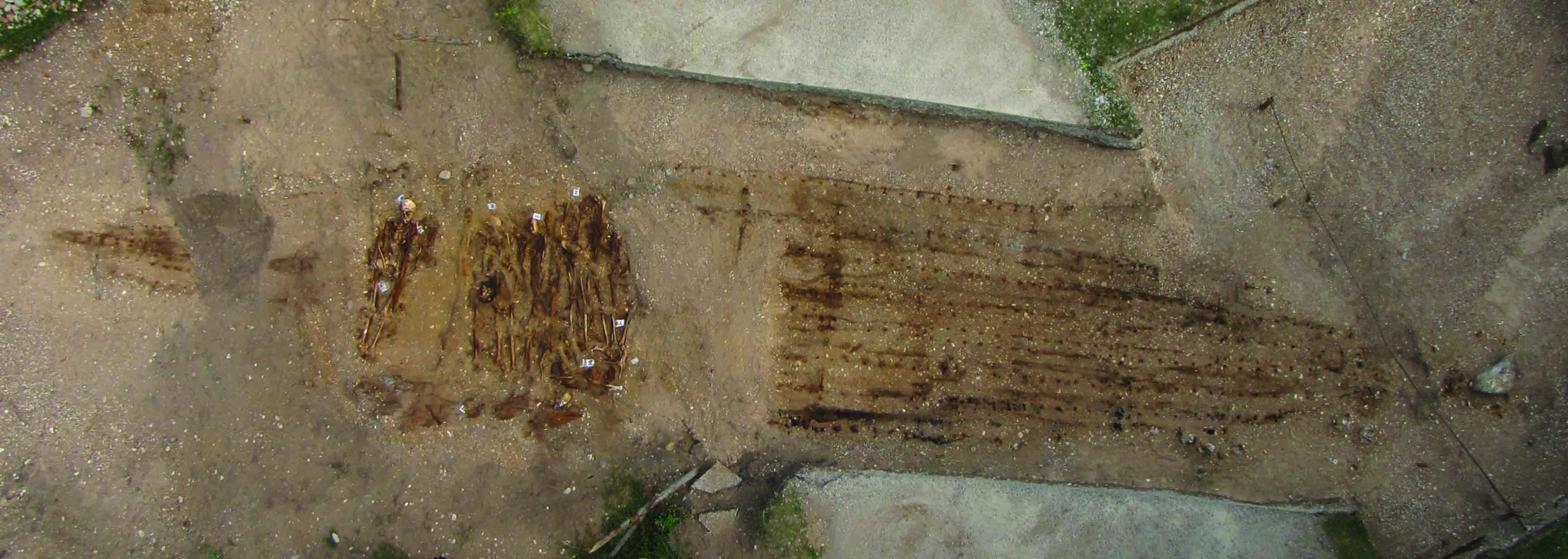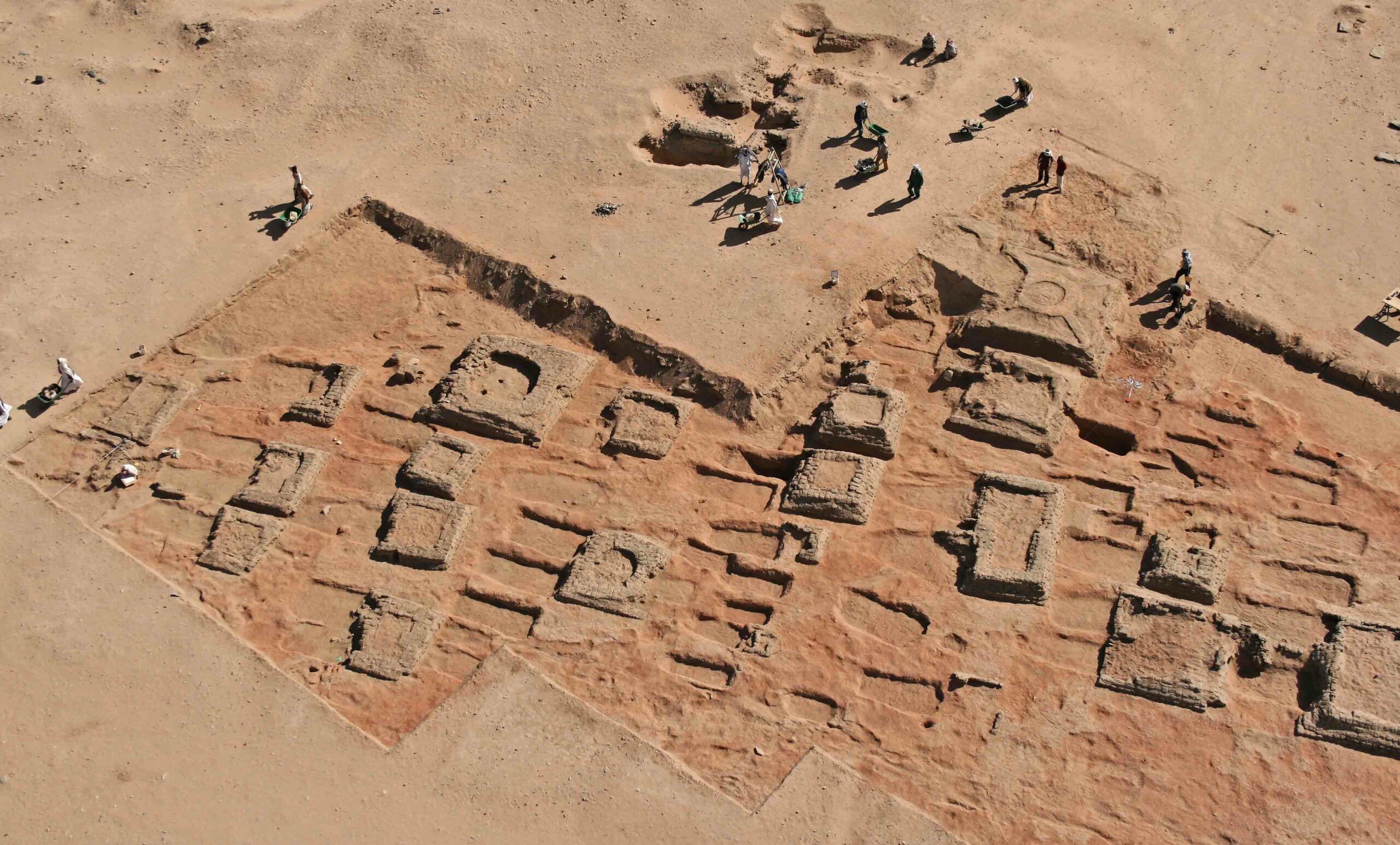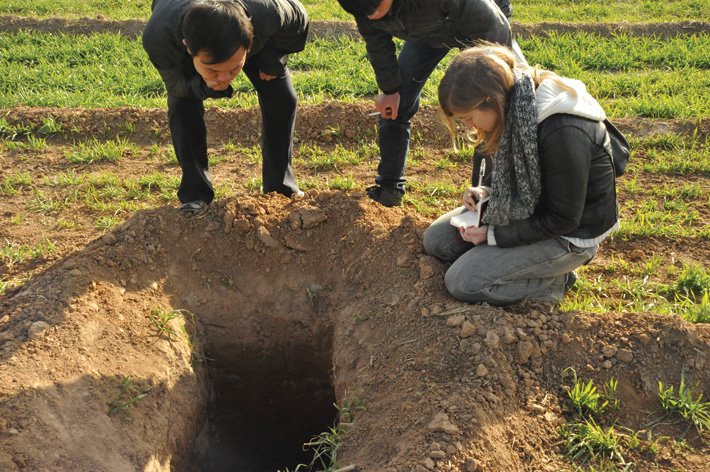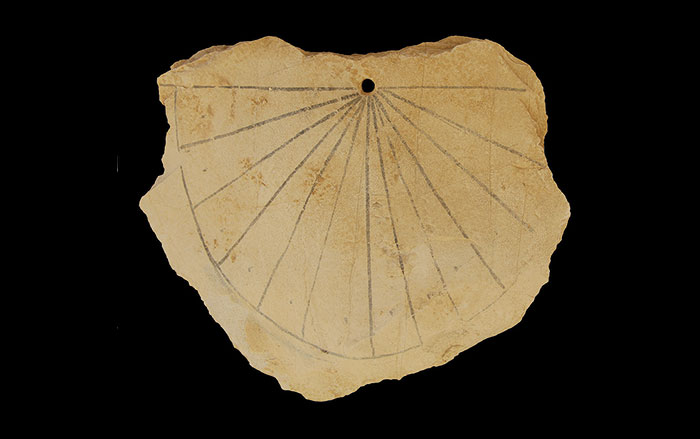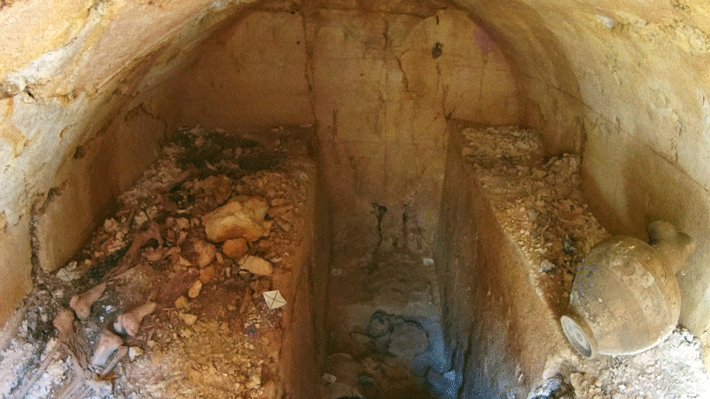
TURIN, ITALY—An intact, royal Etruscan tomb has been discovered in Tarquinia, some 50 miles northwest of Rome. Jars, vases, and a grater perhaps used in a funeral rite were found in front of the stone slab that sealed the rock-cut tomb some 2,600 years ago. When Alessandro Mandolesi of the University of Turin and his team removed the stone slab, they found the skeleton of an individual and a spear resting on a stone bed in the vaulted chamber. Brooches on his chest indicated that he had been wearing a mantle. A bronze dish containing the remains of a meal and a large bronze basin sat at his feet. Other items in the tomb included a small vase that had been hanging on the wall, and large Greek Corinthian vases on the floor. “It’s a unique discovery, as it is extremely rare to find an inviolate Etruscan tomb of an upper-class individual. It opens up huge study opportunities on the Etruscans,” Mandolesi said.








